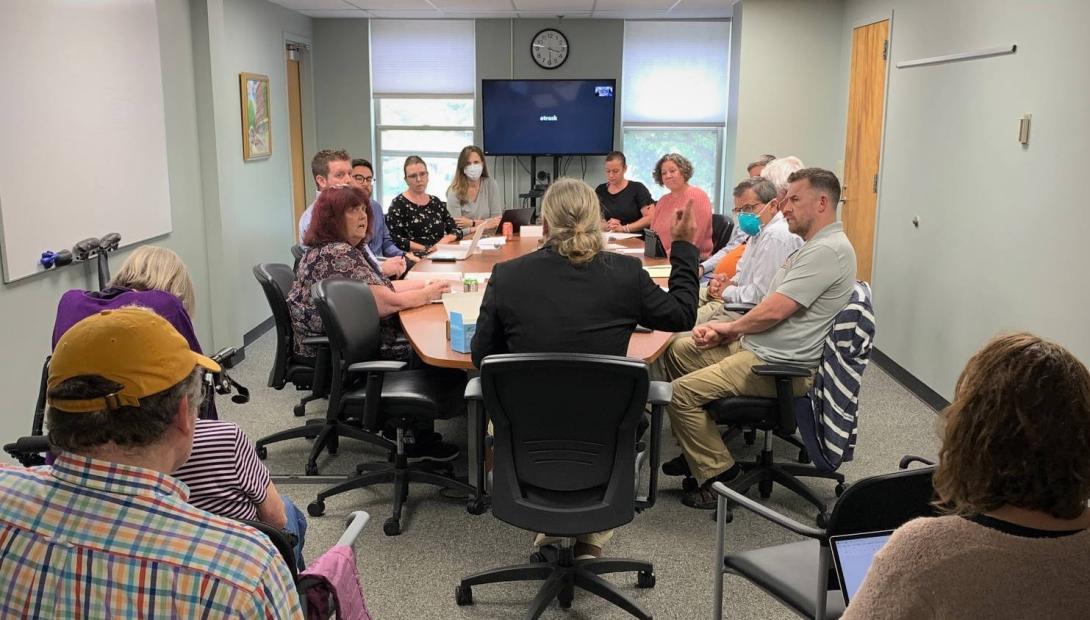On Thursday night the Keene City Council accepted the Report of Keene's Ad Hoc Committee on Housing Stability. Some of the backstory to this report can be found in Part 1 of this multi-part blog post. Here in Part 2, I'll start to look at some of what's in the report.
But first, I'd like to acknowledge and thank the members of the Ad Hoc Committee for there diligent work in looking deeply and compassionately at the issues surrounding homelessness and putting forth the recommendations listed in the report. As listed in the report, these members are:
- George Hansel, Mayor, City of Keene
- Bryan Lake, City Councilor, City of Keene
- Natalie Darcy, Human Services Manager, City of Keene
- Stephen Bragdon, Bragdon, Baron & Kossayda
- Craig Henderson, Southwest Community Services
- Doug Iosue, Cheshire County Department of Corrections
- Joshua Meehan, Keene Housing
- Stacie Pickford, Homeless Advocate
- Jennifer Seher, New Hampshire Care Collaborative
City Manager Elizabeth Dragon and Assistant City Manager Rebecca Landry were also vital to this work, and so were many members of the public, going back to the work of groups like Keene Mutual Aid and the Monadnock Interfaith Project who built a movement to demand action on homelessness in our city. Jodi Newell's work as an organizer was also critical to that effort.
The report works toward three broad, desired outcomes:
- Homeless Support and Transition to Permanent Housing
- Increase in Available Housing
- Regional Engagement in Collaborative Solutions
The phrase "Regional Engagement in Collaborative Solutions" sounds a bit like government-speak, but its actually important. There are a lot of agencies in the region, both public and private, that are out there doing important work, engaging with many of the same clientele but not necessarily in strong communication with each other or all pulling in the same direction.
There is a lot of ground to be gained by helping these agencies work better together. For example, since this report has been released, already staff from the city and social service agencies has begun working with the county jail to ensure inmates are connected with services upon their release, so that they are less likely to be without a stable roof over their head as they are working to rebuild a life for themselves.
Unfortunately, there is only so much that even highly coordinated social service agencies are able do when our broader society is faced with a structural problem like a housing shortage. That's why its so important to figure out how to build more places for people to live.
I was heartened to see broad recognition of the need to increase available housing stock in this report, including support for multifamily housing and Accessory Dwelling Units (ADUs). However, I was a little disappointed that the report limited its ideas to changes to land use code and private sector incentives, really didn't have much useful to say about supporting innovative ways to fund anything.
The Monadnock Interfaith Project has been working hard to develop support for the idea of a housing trust fund, but that idea didn't make the report. Its fascinating to me that the system we have can furnish a one-time jackpot of federal tax money to large private developers that will "incentivize" them to build more affordable units, but "build more and better public housing on a sustainable basis" doesn't really seem to be part of the discussion.
One of the committee members, Jennifer Seher, did bring to the table some ideas about implementing something called the Collaborative Approach to Public Good Investments (CAPGI) model, which provides a multi-stakeholder approach to funding, but that didn't seem to get a whole lot of traction with city staff. I like where the idea is going, although it needs more development.
There is quite a bit more to this report that is still to be discussed..... including camping, safe parking areas, and bathrooms. Stay tuned for that in Part 3.

